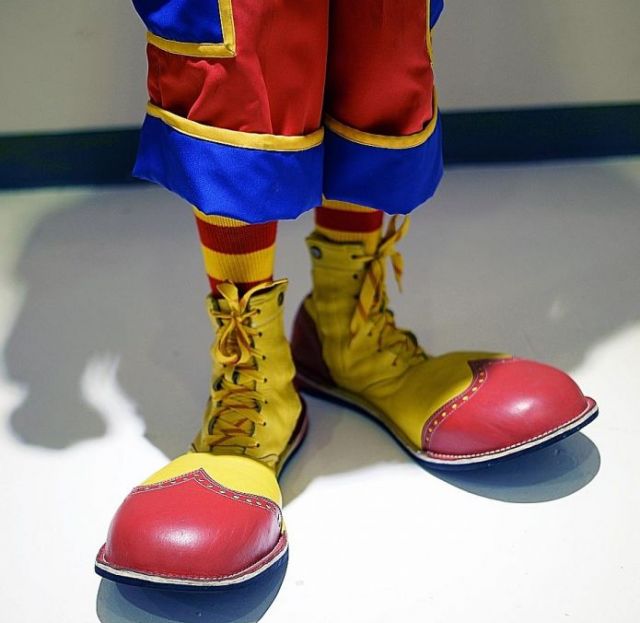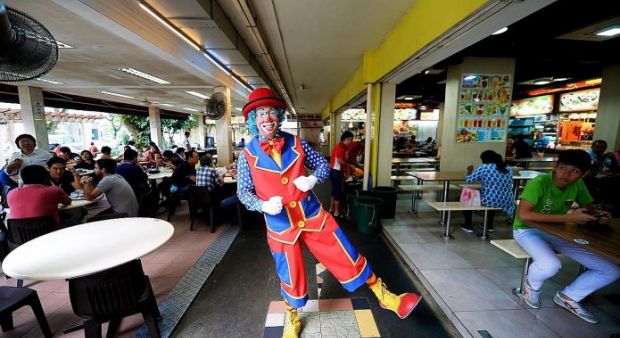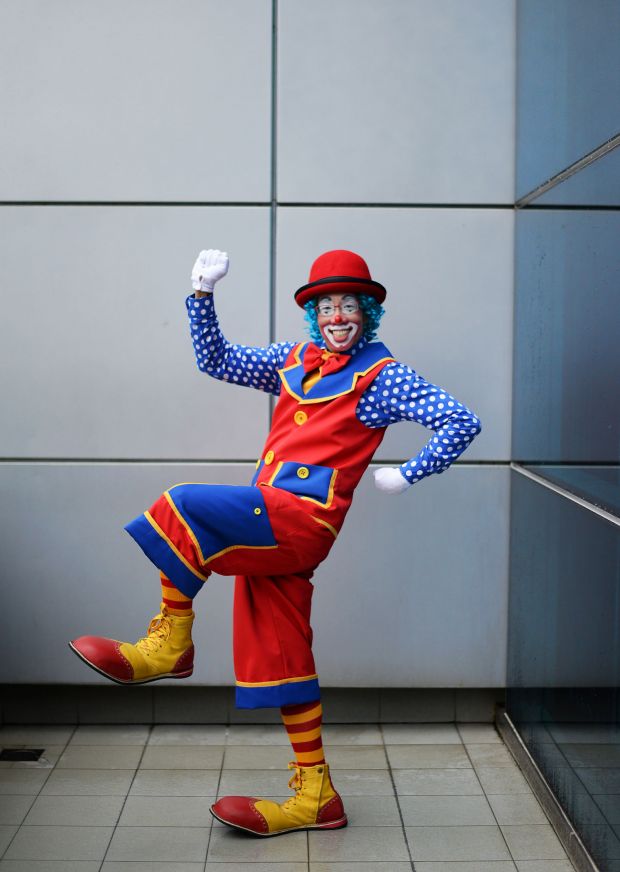With their balloon sculptures and distinct slapstick humour, clowns are traditionally thought to spread joy and laughter.
But some people are viewing these fun-loving entertainers as something more sinister these days.
In what has been dubbed the “creepy clown” craze, pranksters around the world have started dressing up as clowns – but to frighten people.
This trend, which originated in the United States some time around August, has since spread here.
Last week, a video of 19-year-old student Joel Wong scaring passers-by while dressed in a clown costume surfaced online. He has since apologised for his actions.
The antics of these pranksters worsen the perception that clowns are scary, which was perpetuated by famous villainous clowns such as Pennywise in Stephen King’s novel It, and the Joker from the Batman comic series. (See report)
A Google image search of the word “clown” reveals the extent of this fear – nearly half of the results are of scary clowns.
The hysteria has even caused fast food chain McDonald’s in the US to stop public appearances of its clown mascot, in case it contributes to the fear mongering, reported The Washington Post.
But as the “creepy clown” craze continues to spread, professional clowns here may have the last laugh as their business remains unaffected.
Mr Edmund Khong, 35, who has been a practising clown for the past 12 years, says the demand for his services has not taken any hits.
He says: “I know it’s a big problem overseas, but thankfully, it is still all right over here. I continue to get advance bookings.” (See report)
Mr Edward Leong, who performs regionally, says his services are still very much in demand.

The 47-year-old Malaysian, who adopts the persona of Uncle Fishy de Clown, has been performing for the past 14 years.
Mr Leong, who comes to Singapore for a gig about twice a month, says: “It’s never affected my business in Singapore or anywhere else. I still have lots of shows, and all my customers are happy with the show I put on.”
Event organisers tell The New Paper on Sunday that clowns remain “essential” to certain events here.

Mr Robin Goh, manager at JNR entertainment, says: “Clowns will always be needed. If we have no clowns for events such as carnivals or children’s parties, they won’t feel so alive.”
The company has been organising corporate family day events for seven years, and regularly features clowns at the events.
WORRIED
But beneath the exaggerated make-up-drawn smiles, professional clowns admit to being worried by the “creepy clown” craze.

Mr Khong says: “I am concerned about people’s perceptions. They might not be able to tell if these creepy clowns are acting or not, and then they might be scared of real clowns like us.”
The problem has been highlighted by the World Clown Association (WCA), a global clown organisation that has more than 2,100 members across 30 different countries.
Its president, Mr Randy Christensen, says the pranksters who dress up as them are “not clowns”.
In a statement posted on the WCA Facebook page, he says: “We believe the art of clown is something to be treasured and enjoyed by audiences worldwide.
“We stand with our safety officers who call for an end to the traumatisation of individuals and communities. This clearly is not the act of a professional clown.”
Dr Thomas Petschner, director of non-profit organisation Clown Doctors Singapore, which organises clown visits to hospitals to cheer patients up, has a similar stance on the issue.
He tells TNPS: “Everyone should acknowledge that (the pranksters) are not clowns. We have an epidemic of people getting disturbed by attention-seeking individuals, or perhaps fetish for dressing up as clowns to invoke fear.”
Even Stephen King, creator of the demonic clown Pennywise, has spoken out against the problem.
He tweeted last month: “Hey, guys, time to cool the clown hysteria – most of (them) are good, cheer up the kiddies, make people laugh.”
Despite the problem of creepy clowns, Mr Leong says he will not stop performing.
He says juggling some people’s fear of clowns has always been part of the job, and there are ways to bounce back from such issues.
Mr Leong says: “Clowns have always had to deal with people scared of them, so we have to come up with our own ways to soothe the fears.”
For his act, Mr Leong adopts a careful approach when he notices children who might be frightened.
“He starts his act from a distance. Often, the children end up warming to him.
“It’s something very magical when they manage to get past their fears,” he says.
With a loud laugh, he says: “Sometimes, the ones who stood the furthest away end up being the ones closest to me, asking for more jokes and tricks.”





